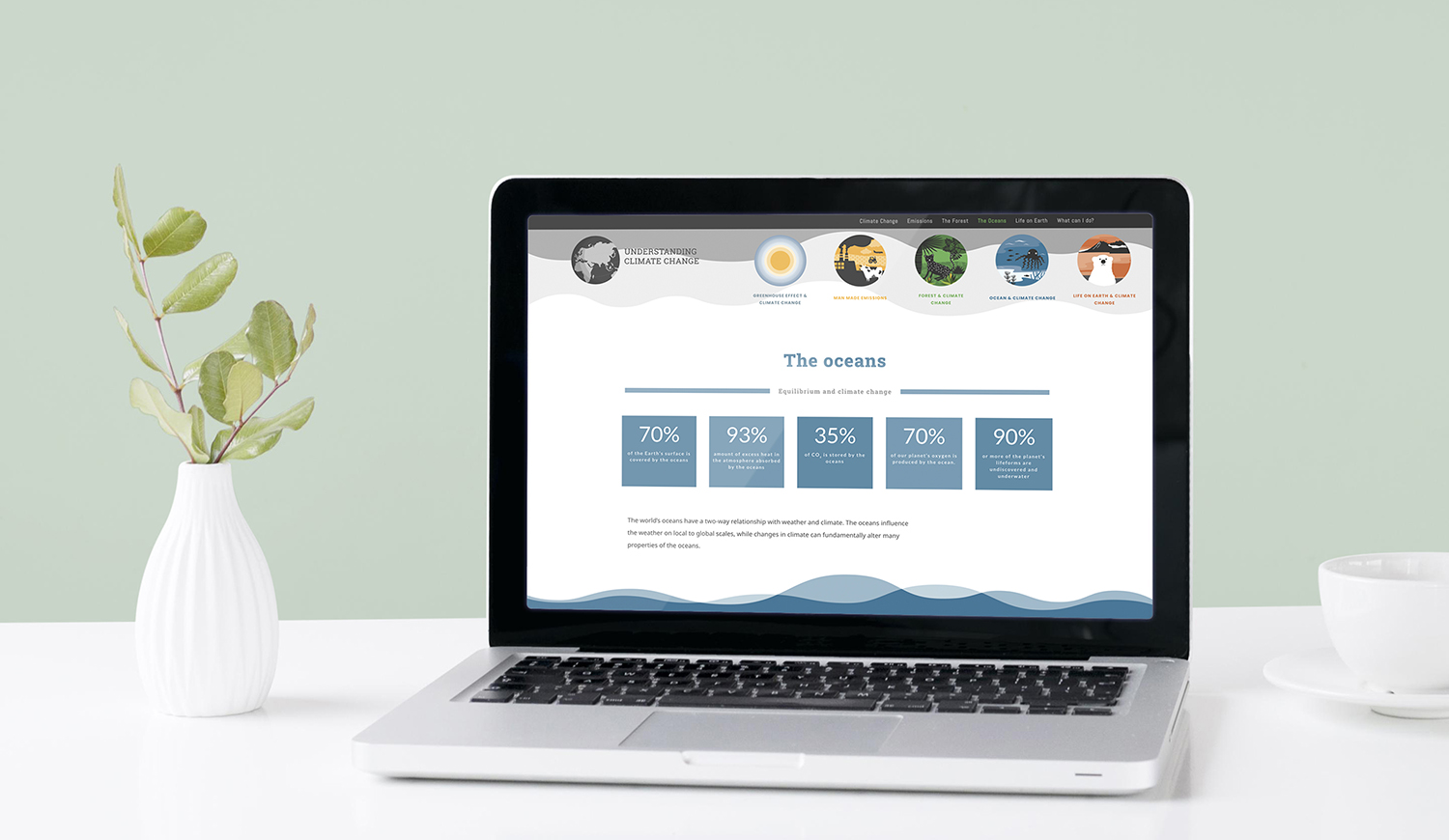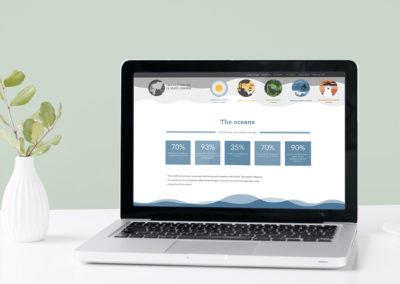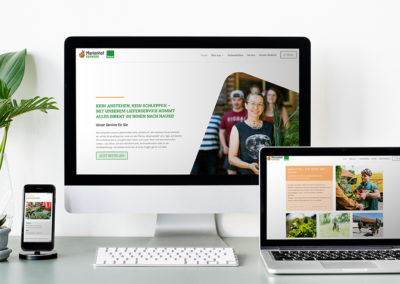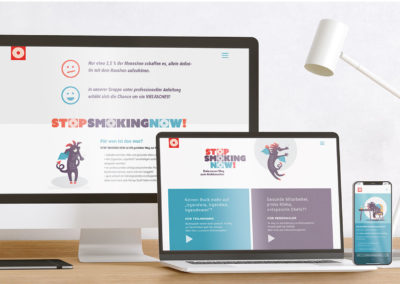UNDERSTANDING CLIMATE CHANGE –
Visual communication for scientific facts
- Project Management
- Resarch
- Development of a visual language
- UX-UI Design
- Web development
UNDERSTANDING CLIMATE CHANGE
PROJECT SUMMARY
In recent years, the importance of communicating scientific information to the general public has become apparent. Climate change and the Covid19 pandemic have brought this issue to the forefront.
In both cases, citizens are directly affected, part of the problem and part of the solution. However, there are several challenges and barriers to this communication.
n my thesis, I attempt to answer the question: How can designers and visual communicators help convey knowledge and scientific facts to a non-expert audience in an understandable and relevant way to create awareness, provoke thought, and effect behavioral change? What factors should be considered to create visual materials that are appropriate for communicating knowledge and messages by the scientific community?
The “understanding climate change” website was created based on recommendations from my thesis. I use the science of climate change as a case study, seeking information on the challenges of the topic, the psychology of communication, communication with different audiences, and the principles and recommendations for solving complex communication problems.
THE CHALLENGES.
Climate change is an issue of growing concern in public opinion. The number of people who believe in the existence of the problem has increased significantly over time, as has their awareness of its causes and potential consequences.
- A large part of the population is still unaware of the phenomenon of climate change, its causes and possible consequences, or has misconceptions about it.
- The rich countries’ model of life, based on high energy consumption, enjoys great social acceptance.
- Even people who are very aware of the problem maintain an energy consumption that is at least similar to that of the rest of the population, so it seems difficult to develop responsible behavior on one’s own despite the advancing awareness of the problem.
- Large industries see their interests threatened by proposals to reduce emissions and openly oppose the implementation of substantial mitigation alternatives, hindering a decisive response to the problem.
The target group
The Concerned, the Concerned Activists, and the Reluctant. People who are currently concerned but basically complacent. People who are in the pre-decision or pre-action phase.
VISUAL COMMUNICATION FOR SCIENTIFIC FACTS – THE RECOMMENDATIONS.
- The message must be consistent.
- Communicate what is known.
- Relate to physical mechanisms.
The Homesite explains how the greenhouse effect works, the interactions among components of the climate system, and observed and measured climate changes. The data presented is based on measurable data and statistics from a variety of sources.
Avoiding Tragic Images.
Illustrations and graphics are used throughout the site to keep it light and fun while still conveying important messages.
Using people and animals to describe how climate change is affecting them can also evoke emotions that motivate behavioral change from the audience.
- General information so as not to overload the visitor with too much information.
- Simplifying the information by using little text and avoiding complicated language.
Information is presented in a neutral and factual manner, avoiding dramatic or generalizing judgments to avoid creating feelings of helplessness or guilt.
- Use of infographics and animated elements to catch attention
To attract visitors’ attention and thus make complex content easier to understand.
- Optimized UX of the website to make it easier to navigate between different topics.
The structuring of the information is manageable. There is a page for each component of the climate system: atmosphere, hydrosphere, stratosphere. All pages are accompanied by a vivid picture and explain in simple terms what the component in question is about.
- Appeal to the individual’s sense of responsibility, not only in daily behavior, but also in making informed political decisions.
The little things in life are often the most important – and with them we also gain the greatest influence. With every action we take to protect the environment, we can improve our world.
The “What can I do” page presents simple ways to reduce energy consumption – for the house, for the home, in the car or when traveling.
All pages have a link to this section.















